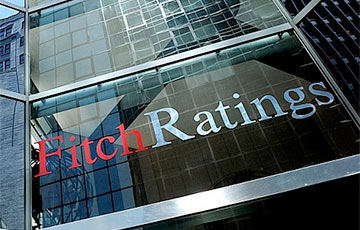Fitch Confirms High Probability of Default In Belarus
36- 6.02.2017, 12:31
- 39,713

The foreign debt payments exceed critical indices twofold.
Fitch Ratings has affirmed Belarus's Long-Term Foreign and Local Currency Issuer Default Ratings (IDRs) at 'B-' with a Stable Outlook. The Short-Term Foreign-Currency and Local-Currency IDRs have been affirmed at 'B' and the Country Ceiling at 'B-', tut.by reports.
Fitch notes that Belarus's ratings balance high external vulnerabilities and a track record of frequent crises with relatively strong public finances and structural indicators, notably, GDP per capita and human development well above peers.
Gross international reserves rose by USD800m to USD4.9bn in 2016 but remain below pre-2014 levels. The net reserve position improved and turned slightly positive in 2016. However, Fitch estimates that liquid assets as a share of short-term liabilities (at 39% in 2017) is the lowest in the 'B' category.
Fitch believes that Belarus's current account deficit rose to 5% of GDP (USD2.4bn) in 2016, up from 3.7% (USD2bn) in 2015. The prospect of growth underperformance, and a gradual increase in international oil prices could contain current account deficits at 4.4% in 2017 and 2018. Nevertheless, Belarus's gross external financing requirement (not including short-term debt), as a percentage of international reserves, is 146%, among the highest of Fitch-rated emerging market sovereigns. Net external debt (55% of GDP) and external debt service (23% of CXR) are double their respective 'B' medians.
The experts also pay attention to the protracted dispute with Russia regarding gas prices that started in 2016 could further pressure external accounts, FX generation capacity and economic activity. Sovereign foreign currency debt service is forecast at USD3.4bn in 2017, with external debt payments accounting for USD1.8bn. The government's financing plan increases the reliance on non-debt foreign currency revenues, partly derived from oil customs duties and exports, and a return to international capital markets.
Fitch reminds that Belarus faces a USD800m international bond maturity in January 2018. Reducing financing risks will likely depend upon unlocking delayed disbursements from the EDB programme and/or tapping additional sources of foreign exchange. Although the IMF and the government have reportedly discussed the potential for a programme, the timing and outcome remain uncertain and we have not factored IMF disbursements into our forecasts.
Macroeconomic performance is much weaker than peers. The economy remained in recession in 2016 contracting by 2.6% in 2016 due to weak growth in trade partners, real wage contraction, tighter policy stance and the gas price dispute with Russia. Fitch expects the economy to remain in recession in 2017, but the pace of contraction to decelerate due to a relative improvement in consumption and investment. The positive impact of the oil price and neighbours' recovery could be limited by reduced oil imports volume from Russia.
Inflation declined to 10.6% in 2016, below the 12% goal set by the central bank. Average inflation could hover around 11% in 2017 due to expected utility tariffs' adjustments. The central bank has maintained a tight policy stance and is working on a strategy to move toward a full-fledged inflation targeting regime by 2020. However, the effectiveness of monetary policy is constrained by programme lending and high levels of financial dollarisation.
Fitch estimates the consolidated general government remained in surplus (1.6% of GDP) in 2016 reflecting revenue measures, no real growth for the wage bill and capital spending cuts. The social protection fund recorded a small surplus (0.3% of GDP). Fitch estimates that including off-balance sheet expenditure, the government reached a surplus in 2016 at 0.6% of GDP. Authorities have presented a three-year budget (2017-2019) in order to anchor expectations and stress their commitment to reducing off-balance sheet spending and programme lending.
Government debt was 52% of GDP at end-2016, below the 56% 'B' median. Fitch includes government guarantees, totalling 11% of GDP, in its total debt calculations, due to the high likelihood that the state will need to meet state-owned enterprises' repayment obligations. Debt is highly exposed to currency risk, as 80% is foreign currency denominated.
Regulatory NPLs (the three riskiest categories) more than doubled to 14.2% of gross credit exposure at end-November 2016 from 6.8% at end-2015 and further increases are likely. The system's capitalisation level is 18.5%. The Asset Quality Review (AQR) finalised in July did not provide sufficient information to assess the state of the financial sector and fully evaluate its resilience to shocks. The large presence of the public sector (50% of assets) creates fiscal risks for the sovereign.
Russia remains a key partner for Belarus from a trade, financing and political perspective. The gas price dispute with Russia, which echoes various energy disputes in the 2000s, remains unresolved thus creating uncertainty for the 2017 economic and financing outlook,” — the agency summarizes.








